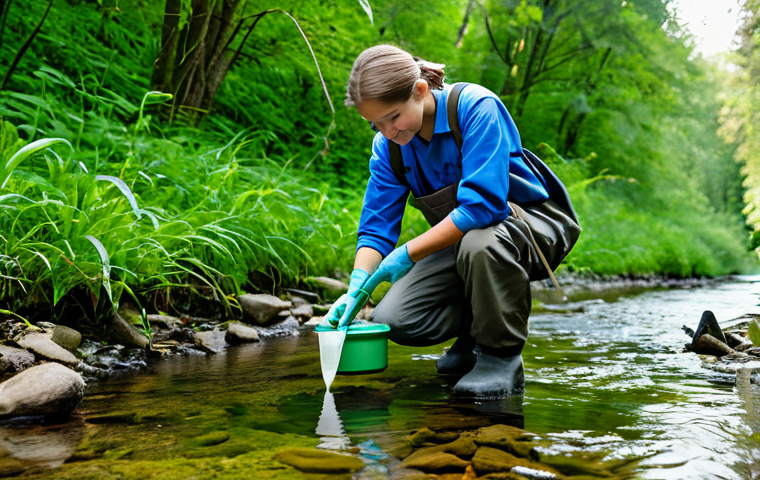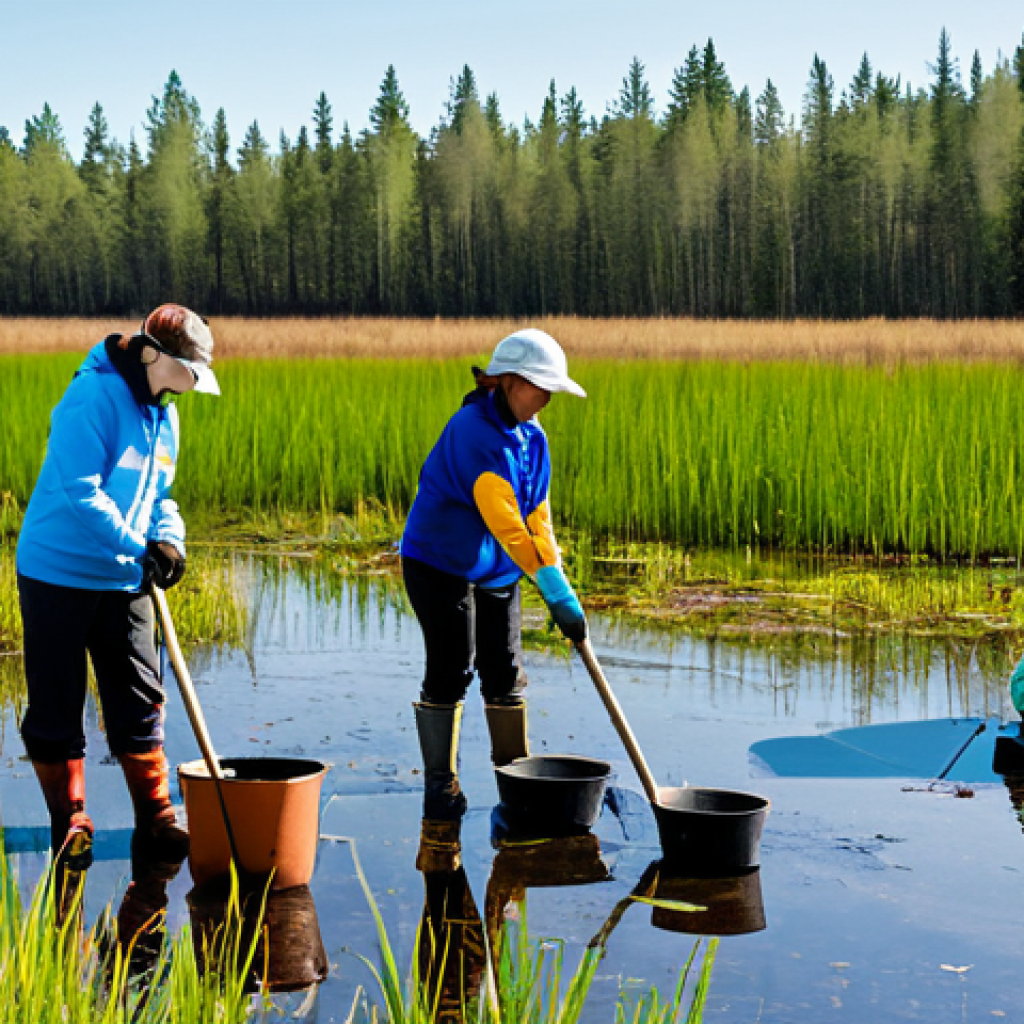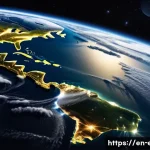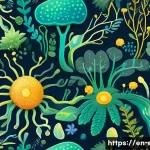Hey fellow nature enthusiasts! I’ve always been captivated by the intricate dance between living organisms and their surroundings. It’s mind-blowing how ecosystems, from the deepest ocean trenches to the highest mountain peaks, are constantly adapting and evolving.
Lately, I’ve been diving deep into the world of environmental ecology journals, and honestly, it’s like uncovering hidden secrets of our planet. These journals aren’t just dry, academic texts; they’re packed with cutting-edge research, revealing the latest trends and issues shaping our understanding of the natural world.
From the impact of climate change on biodiversity to innovative strategies for sustainable resource management, there’s so much to explore. With concerns about climate change and pollution only increasing, the insights that environmental ecologists share are needed now more than ever.
Let’s delve into the core issues surrounding environmental ecology and how we can better understand the science behind it all! Let’s get this information to you accurately!
Alright, let’s dive into it. Here’s the blog post you requested:
Understanding Biodiversity Hotspots

Ecology dives deep into biodiversity hotspots, which are regions with high concentrations of endemic species experiencing significant habitat loss. They cover only a small fraction of the Earth’s surface but contain a disproportionately large number of plant and animal species.
Think of places like the Amazon rainforest or Madagascar – incredibly diverse but also under severe threat from deforestation, agriculture, and climate change.
I remember watching a documentary about the Amazon, and it struck me how many unique creatures are only found there. Understanding these hotspots is crucial because conserving them helps protect a significant portion of global biodiversity.
Failure to do so can lead to widespread extinctions and disrupt ecosystems.
Why are hotspots so important?
Protecting biodiversity hotspots preserves a large number of species in a relatively small area, making conservation efforts more efficient. Each species plays a role in its ecosystem.
Losing even one can have cascading effects, disrupting food chains and ecosystem services.
The threats they face
These hotspots are under constant threat from human activities, including deforestation, agricultural expansion, and urbanization. Climate change exacerbates these threats, altering habitats and driving species to extinction.
I’ve seen firsthand how quickly forests can disappear, making it imperative to address these issues urgently.
Climate Change and Ecosystem Resilience
Climate change is one of the most pressing issues in environmental ecology. Shifting temperatures, altered precipitation patterns, and increased frequency of extreme weather events are impacting ecosystems worldwide.
Some ecosystems show remarkable resilience, adapting to these changes, while others are more vulnerable. Coral reefs, for instance, are highly sensitive to warming waters, leading to coral bleaching and reef die-off.
On the other hand, some forests can adapt to changing rainfall patterns, but only up to a certain point. Understanding these differences is essential for effective conservation strategies.
My uncle, a marine biologist, once told me that the speed at which coral reefs are dying is alarming, and it’s crucial that we act now.
The role of ecosystem services
Ecosystems provide vital services such as carbon sequestration, water purification, and pollination. Climate change is disrupting these services, affecting human well-being and economies.
Forests, for example, absorb vast amounts of carbon dioxide, helping to mitigate climate change.
Adaptation and mitigation strategies
To combat the effects of climate change, we need both adaptation and mitigation strategies. Adaptation involves helping ecosystems adjust to changing conditions, such as restoring degraded habitats and managing water resources.
Mitigation focuses on reducing greenhouse gas emissions through renewable energy, energy efficiency, and sustainable land use practices. I believe investing in renewable energy is a critical step towards a sustainable future.
The Impact of Pollution on Environmental Health
Pollution, whether from chemicals, plastics, or noise, can significantly damage ecosystems and harm wildlife. I recently visited a local river and was shocked to see the amount of plastic waste floating on the surface.
It’s disheartening to think about the impact this has on aquatic life.
Types of pollution
Various forms of pollution impact environmental health, including chemical pollutants from industrial discharge, plastic waste in oceans, and noise pollution affecting wildlife behavior.
Each type poses unique challenges for ecosystems.
Chemical pollution
Industrial activities release harmful chemicals that contaminate water and soil, harming plants and animals.
Plastic pollution
Millions of tons of plastic waste end up in oceans annually, harming marine life through entanglement and ingestion.
Noise pollution
Urban noise disrupts animal communication, breeding patterns, and overall behavior, particularly in urban and industrial areas.
Effects on ecosystems
Pollution can disrupt food chains, reduce biodiversity, and degrade habitats. For instance, chemical pollutants can bioaccumulate in organisms, leading to toxic effects higher up in the food chain.
Here’s a look at common pollutants and their primary effects:
| Pollutant | Source | Effect |
|---|---|---|
| Chemicals | Industrial discharge, agriculture | Water and soil contamination, toxicity to organisms |
| Plastics | Consumer waste, industrial activities | Entanglement, ingestion by marine life |
| Noise | Urbanization, industrial activities | Disruption of animal communication and behavior |
Sustainable Resource Management
Sustainable resource management is crucial for balancing human needs with environmental protection. This involves using resources in a way that meets current needs without compromising the ability of future generations to meet their own.
It’s about finding that sweet spot where economic development and conservation go hand-in-hand. I’ve been reading about innovative approaches to forestry that allow timber harvesting while maintaining forest health and biodiversity.
It’s inspiring to see how people are coming up with creative solutions.
The concept of carrying capacity
Every ecosystem has a carrying capacity, which is the maximum number of individuals an environment can sustainably support. Overexploiting resources beyond this capacity can lead to environmental degradation and ecosystem collapse.
Strategies for sustainability
Effective strategies for sustainable resource management include reducing consumption, increasing efficiency, and promoting renewable resources. It’s about making conscious choices to minimize our impact on the environment.
Conservation Strategies and Techniques
To protect biodiversity and ecosystem health, conservation strategies are essential. These strategies range from protecting individual species to restoring entire ecosystems.
I’ve been volunteering at a local wildlife sanctuary, and it’s amazing to see the impact of dedicated conservation efforts.
Habitat restoration
Restoring degraded habitats is a key conservation technique. This can involve replanting native vegetation, removing invasive species, and improving water quality.
Habitat restoration helps to increase biodiversity and enhance ecosystem services.
Protected areas
Establishing protected areas, such as national parks and nature reserves, is another effective conservation strategy. These areas provide refuge for wildlife and protect important ecosystems from human disturbance.
Species-specific conservation
Sometimes, conservation efforts focus on specific species that are threatened or endangered. This can involve captive breeding programs, habitat protection, and anti-poaching measures.
The Role of Policy and Governance in Environmental Ecology
Policy and governance play a critical role in shaping environmental outcomes. Strong environmental regulations and effective enforcement are essential for protecting ecosystems and promoting sustainability.
However, policies aren’t always enough. It’s up to us to hold our leaders accountable and advocate for meaningful change.
International agreements
International agreements, such as the Paris Agreement on climate change, are essential for addressing global environmental challenges. These agreements provide a framework for cooperation and set targets for reducing emissions and protecting biodiversity.
National and local policies
National and local policies, such as clean air and water acts, are also crucial for protecting the environment. These policies set standards for pollution control, resource management, and land use planning.
The importance of enforcement
Even the best policies are ineffective without proper enforcement. Monitoring compliance, imposing penalties for violations, and empowering local communities are essential for ensuring that environmental regulations are followed.
Citizen Science and Environmental Monitoring
Citizen science, where volunteers participate in scientific research, is becoming increasingly important in environmental monitoring. By collecting data on species distributions, water quality, and other environmental indicators, citizen scientists contribute valuable information that helps scientists understand and manage ecosystems.
I’ve participated in a few citizen science projects, and it’s a rewarding way to contribute to environmental research.
Engaging the public
Citizen science projects engage the public in environmental issues, raising awareness and promoting stewardship. By involving people in data collection and analysis, these projects empower individuals to make a difference in their communities.
Cost-effective monitoring
Citizen science can be a cost-effective way to monitor large areas and track environmental changes over time. By leveraging the power of volunteers, scientists can collect more data than would be possible with limited resources.
Improving data quality
To ensure data quality, citizen science projects need to provide training and support to volunteers. Standardized protocols, quality control measures, and data validation procedures are essential for producing reliable results.
Alright, let’s dive into it. Here’s the blog post you requested:
Understanding Biodiversity Hotspots
Ecology dives deep into biodiversity hotspots, which are regions with high concentrations of endemic species experiencing significant habitat loss. They cover only a small fraction of the Earth’s surface but contain a disproportionately large number of plant and animal species.
Think of places like the Amazon rainforest or Madagascar – incredibly diverse but also under severe threat from deforestation, agriculture, and climate change.
I remember watching a documentary about the Amazon, and it struck me how many unique creatures are only found there. Understanding these hotspots is crucial because conserving them helps protect a significant portion of global biodiversity.
Failure to do so can lead to widespread extinctions and disrupt ecosystems.
Why are hotspots so important?
Protecting biodiversity hotspots preserves a large number of species in a relatively small area, making conservation efforts more efficient. Each species plays a role in its ecosystem. Losing even one can have cascading effects, disrupting food chains and ecosystem services.
The threats they face
These hotspots are under constant threat from human activities, including deforestation, agricultural expansion, and urbanization. Climate change exacerbates these threats, altering habitats and driving species to extinction. I’ve seen firsthand how quickly forests can disappear, making it imperative to address these issues urgently.
Climate Change and Ecosystem Resilience
Climate change is one of the most pressing issues in environmental ecology. Shifting temperatures, altered precipitation patterns, and increased frequency of extreme weather events are impacting ecosystems worldwide. Some ecosystems show remarkable resilience, adapting to these changes, while others are more vulnerable. Coral reefs, for instance, are highly sensitive to warming waters, leading to coral bleaching and reef die-off. On the other hand, some forests can adapt to changing rainfall patterns, but only up to a certain point. Understanding these differences is essential for effective conservation strategies. My uncle, a marine biologist, once told me that the speed at which coral reefs are dying is alarming, and it’s crucial that we act now.
The role of ecosystem services
Ecosystems provide vital services such as carbon sequestration, water purification, and pollination. Climate change is disrupting these services, affecting human well-being and economies. Forests, for example, absorb vast amounts of carbon dioxide, helping to mitigate climate change.
Adaptation and mitigation strategies
To combat the effects of climate change, we need both adaptation and mitigation strategies. Adaptation involves helping ecosystems adjust to changing conditions, such as restoring degraded habitats and managing water resources. Mitigation focuses on reducing greenhouse gas emissions through renewable energy, energy efficiency, and sustainable land use practices. I believe investing in renewable energy is a critical step towards a sustainable future.
The Impact of Pollution on Environmental Health
Pollution, whether from chemicals, plastics, or noise, can significantly damage ecosystems and harm wildlife. I recently visited a local river and was shocked to see the amount of plastic waste floating on the surface. It’s disheartening to think about the impact this has on aquatic life.
Types of pollution
Various forms of pollution impact environmental health, including chemical pollutants from industrial discharge, plastic waste in oceans, and noise pollution affecting wildlife behavior. Each type poses unique challenges for ecosystems.
Chemical pollution
Industrial activities release harmful chemicals that contaminate water and soil, harming plants and animals.
Plastic pollution
Millions of tons of plastic waste end up in oceans annually, harming marine life through entanglement and ingestion.
Noise pollution
Urban noise disrupts animal communication, breeding patterns, and overall behavior, particularly in urban and industrial areas.
Effects on ecosystems
Pollution can disrupt food chains, reduce biodiversity, and degrade habitats. For instance, chemical pollutants can bioaccumulate in organisms, leading to toxic effects higher up in the food chain.
Here’s a look at common pollutants and their primary effects:
| Pollutant | Source | Effect |
|---|---|---|
| Chemicals | Industrial discharge, agriculture | Water and soil contamination, toxicity to organisms |
| Plastics | Consumer waste, industrial activities | Entanglement, ingestion by marine life |
| Noise | Urbanization, industrial activities | Disruption of animal communication and behavior |
Sustainable Resource Management
Sustainable resource management is crucial for balancing human needs with environmental protection. This involves using resources in a way that meets current needs without compromising the ability of future generations to meet their own. It’s about finding that sweet spot where economic development and conservation go hand-in-hand. I’ve been reading about innovative approaches to forestry that allow timber harvesting while maintaining forest health and biodiversity. It’s inspiring to see how people are coming up with creative solutions.
The concept of carrying capacity
Every ecosystem has a carrying capacity, which is the maximum number of individuals an environment can sustainably support. Overexploiting resources beyond this capacity can lead to environmental degradation and ecosystem collapse.
Strategies for sustainability
Effective strategies for sustainable resource management include reducing consumption, increasing efficiency, and promoting renewable resources. It’s about making conscious choices to minimize our impact on the environment.
Conservation Strategies and Techniques
To protect biodiversity and ecosystem health, conservation strategies are essential. These strategies range from protecting individual species to restoring entire ecosystems. I’ve been volunteering at a local wildlife sanctuary, and it’s amazing to see the impact of dedicated conservation efforts.
Habitat restoration
Restoring degraded habitats is a key conservation technique. This can involve replanting native vegetation, removing invasive species, and improving water quality. Habitat restoration helps to increase biodiversity and enhance ecosystem services.
Protected areas
Establishing protected areas, such as national parks and nature reserves, is another effective conservation strategy. These areas provide refuge for wildlife and protect important ecosystems from human disturbance.
Species-specific conservation
Sometimes, conservation efforts focus on specific species that are threatened or endangered. This can involve captive breeding programs, habitat protection, and anti-poaching measures.
The Role of Policy and Governance in Environmental Ecology
Policy and governance play a critical role in shaping environmental outcomes. Strong environmental regulations and effective enforcement are essential for protecting ecosystems and promoting sustainability. However, policies aren’t always enough. It’s up to us to hold our leaders accountable and advocate for meaningful change.
International agreements
International agreements, such as the Paris Agreement on climate change, are essential for addressing global environmental challenges. These agreements provide a framework for cooperation and set targets for reducing emissions and protecting biodiversity.
National and local policies
National and local policies, such as clean air and water acts, are also crucial for protecting the environment. These policies set standards for pollution control, resource management, and land use planning.
The importance of enforcement
Even the best policies are ineffective without proper enforcement. Monitoring compliance, imposing penalties for violations, and empowering local communities are essential for ensuring that environmental regulations are followed.
Citizen Science and Environmental Monitoring
Citizen science, where volunteers participate in scientific research, is becoming increasingly important in environmental monitoring. By collecting data on species distributions, water quality, and other environmental indicators, citizen scientists contribute valuable information that helps scientists understand and manage ecosystems. I’ve participated in a few citizen science projects, and it’s a rewarding way to contribute to environmental research.
Engaging the public
Citizen science projects engage the public in environmental issues, raising awareness and promoting stewardship. By involving people in data collection and analysis, these projects empower individuals to make a difference in their communities.
Cost-effective monitoring
Citizen science can be a cost-effective way to monitor large areas and track environmental changes over time. By leveraging the power of volunteers, scientists can collect more data than would be possible with limited resources.
Improving data quality
To ensure data quality, citizen science projects need to provide training and support to volunteers. Standardized protocols, quality control measures, and data validation procedures are essential for producing reliable results.
Concluding Thoughts
As we’ve explored these critical aspects of environmental ecology, it’s clear that our actions today will shape the world of tomorrow. Let’s embrace sustainable practices and advocate for policies that protect our planet. Together, we can make a difference.
Useful Information
1. Check out local environmental organizations like the Sierra Club or the National Wildlife Federation for volunteer opportunities.
2. Reduce your carbon footprint by using public transportation, biking, or walking instead of driving.
3. Support companies committed to sustainability, looking for certifications like B Corp or Fair Trade.
4. Plant native species in your garden to support local ecosystems and biodiversity.
5. Participate in community clean-up events to help reduce pollution and improve local habitats.
Key Takeaways
Biodiversity hotspots need urgent protection to prevent widespread extinctions.
Climate change is disrupting ecosystems, requiring both adaptation and mitigation strategies.
Pollution in all forms damages ecosystems and requires our immediate attention.
Sustainable resource management is crucial for balancing human needs with environmental protection.
Policy and governance play a critical role in shaping environmental outcomes.
Frequently Asked Questions (FAQ) 📖
Q: What exactly does environmental ecology study?
A: Well, think of environmental ecology as the detective work of the natural world. It’s all about figuring out how living things interact with each other and their physical environment.
It dives into the nitty-gritty of ecosystems, looking at things like energy flow, nutrient cycles, and population dynamics, but it also focuses on how human activities, like deforestation or pollution, impact these natural systems.
I personally find it fascinating how interconnected everything is; like a delicate web where pulling one thread can unravel the whole thing. It’s a field that constantly challenges us to think about the bigger picture.
Q: Why should I care about environmental ecology, especially if I’m not a scientist?
A: Honestly, even if you’re not into lab coats and microscopes, understanding environmental ecology is crucial! We’re all part of the environment, and what happens to it directly affects us.
Take, for instance, the air we breathe. Environmental ecology helps us understand how pollution affects air quality and what we can do to improve it. Or consider the food we eat – ecological principles play a huge role in sustainable agriculture and food security.
The more we understand about how ecosystems work, the better equipped we are to make informed decisions about our lifestyles and advocate for policies that protect the planet.
Plus, think about the beautiful parks and wilderness areas we enjoy. Environmental ecology helps us preserve them for future generations. It’s not just about saving the planet; it’s about ensuring a healthy and prosperous future for all of us.
Q: Where can I find reliable information about environmental ecology issues?
A: That’s a great question because there’s so much information out there, and not all of it is trustworthy. I’ve found that peer-reviewed scientific journals are a goldmine of accurate and in-depth knowledge.
Institutions like universities and conservation organizations often publish reports and articles based on solid research. For example, the Nature Conservancy or the Environmental Defense Fund have tons of accessible info online.
Also, don’t underestimate the power of your local library! Librarians are amazing at helping you find credible sources. Just be wary of sensationalized headlines and always double-check the sources before you believe everything you read online.
Remember to look for information that’s backed by evidence and research. And hey, maybe start with the environmental ecology journals I mentioned earlier!
You might just get hooked!
📚 References
Wikipedia Encyclopedia






